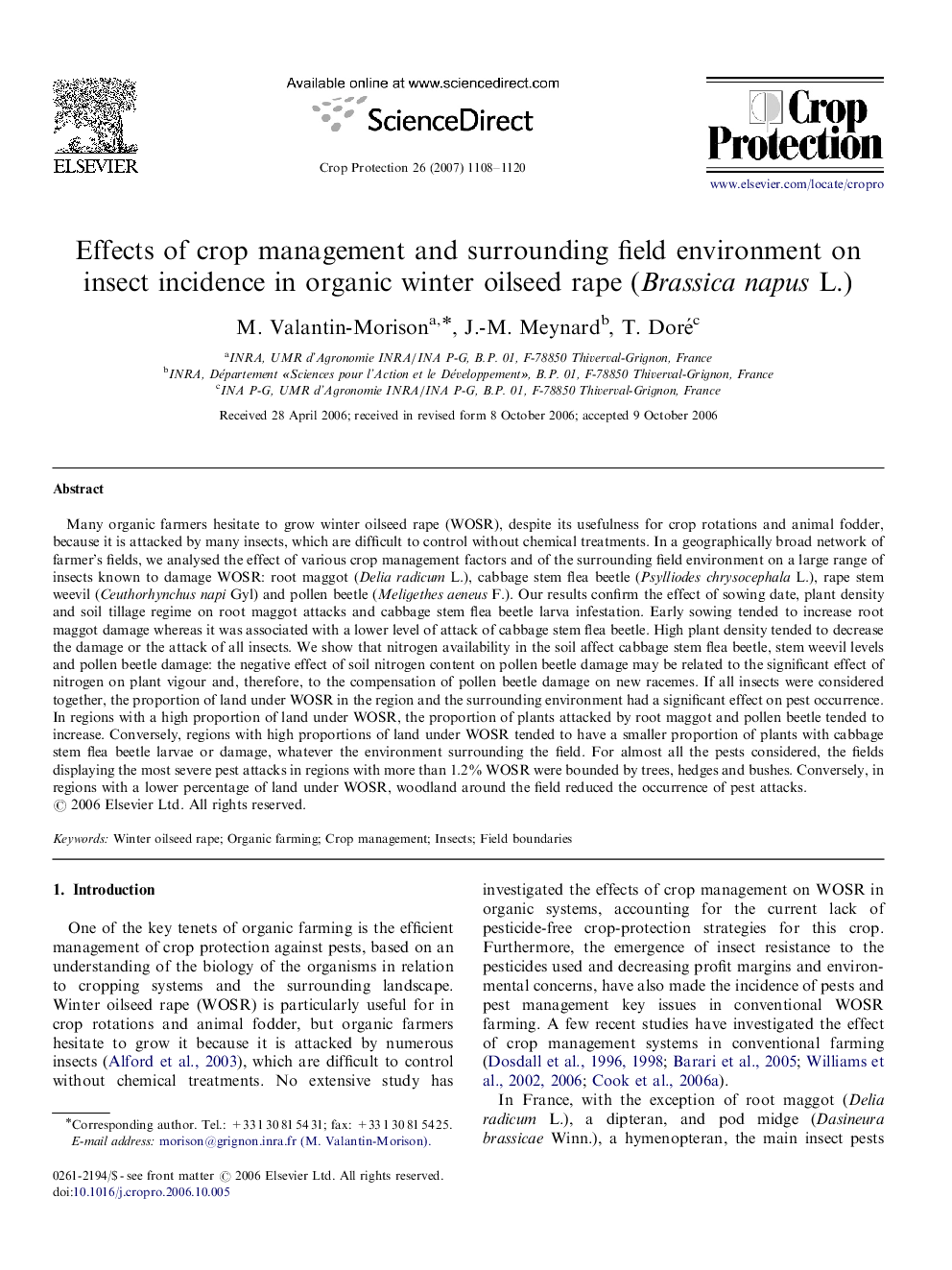| کد مقاله | کد نشریه | سال انتشار | مقاله انگلیسی | نسخه تمام متن |
|---|---|---|---|---|
| 4507945 | 1321396 | 2007 | 13 صفحه PDF | دانلود رایگان |

Many organic farmers hesitate to grow winter oilseed rape (WOSR), despite its usefulness for crop rotations and animal fodder, because it is attacked by many insects, which are difficult to control without chemical treatments. In a geographically broad network of farmer's fields, we analysed the effect of various crop management factors and of the surrounding field environment on a large range of insects known to damage WOSR: root maggot (Delia radicum L.), cabbage stem flea beetle (Psylliodes chrysocephala L.), rape stem weevil (Ceuthorhynchus napi Gyl) and pollen beetle (Meligethes aeneus F.). Our results confirm the effect of sowing date, plant density and soil tillage regime on root maggot attacks and cabbage stem flea beetle larva infestation. Early sowing tended to increase root maggot damage whereas it was associated with a lower level of attack of cabbage stem flea beetle. High plant density tended to decrease the damage or the attack of all insects. We show that nitrogen availability in the soil affect cabbage stem flea beetle, stem weevil levels and pollen beetle damage: the negative effect of soil nitrogen content on pollen beetle damage may be related to the significant effect of nitrogen on plant vigour and, therefore, to the compensation of pollen beetle damage on new racemes. If all insects were considered together, the proportion of land under WOSR in the region and the surrounding environment had a significant effect on pest occurrence. In regions with a high proportion of land under WOSR, the proportion of plants attacked by root maggot and pollen beetle tended to increase. Conversely, regions with high proportions of land under WOSR tended to have a smaller proportion of plants with cabbage stem flea beetle larvae or damage, whatever the environment surrounding the field. For almost all the pests considered, the fields displaying the most severe pest attacks in regions with more than 1.2% WOSR were bounded by trees, hedges and bushes. Conversely, in regions with a lower percentage of land under WOSR, woodland around the field reduced the occurrence of pest attacks.
Journal: Crop Protection - Volume 26, Issue 8, August 2007, Pages 1108–1120